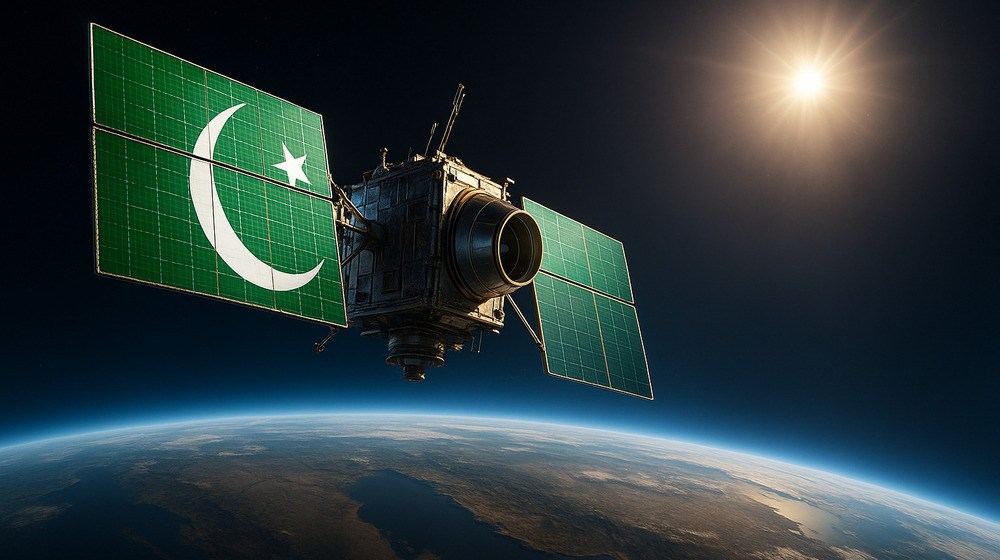Space, the Next Frontier of National Power

In the technology-driven 21st century, space has become a critical domain for national security, economic development, and technological prowess. As countries, big and small, strive to harness the potential of outer space, Pakistan, too, has been making strides in this field, largely unnoticed. It was the Zarb-e-Karrar that stunned Pakistan’s adversary, India, and the world about Pakistan’s grip on space, cyber, EW, and networking in the multi-domain aerial combat in the early hours of May 7th. The war also underscored the importance of space for “situational awareness.” Pakistan’s ambitions to surmount the next frontier of space as a critical element of national power, the India factor, and its strategic partnership with China, are propelling its space programme.
On 30 May 2024, Pakistan successfully launched its Multi-Mission Communication Satellite (PakSat-MM1), marking a significant benchmark in the nation’s space and communication capabilities. This satellite, equipped with cutting-edge communication technologies, reinforced Pakistan’s presence in geostationary orbit. It provides multiple satellite-based communication services across the country. It is an important part of Pakistan’s efforts to establish a “space-based augmentation system” to improve the accuracy of its own navigation capabilities and to reduce dependence on foreign navigation systems. This satellite also serves the requirements of the Pakistan Air Force.
This year, Pakistan has launched three satellites. In January, a satellite jointly produced by Pakistan’s Air University and the National Aerospace Science & Technology Park (NASTP) was sent into space via the SpaceX rocket. It is an advanced, high-resolution Earth observation CubeSat, also used for ISR. In the same month, Pakistan launched its first entirely indigenously built satellite, the Electro-Optical Satellite EO-1. This is also an ISR satellite. This satellite is part of the larger “Kaukab constellation”, which will eventually consist of five satellites for Pakistan.
Then, on July 31, Pakistan successfully launched its fourth Remote Sensing Satellite, developed in collaboration with China, bringing the number of active satellites to seven. Both these satellites were lifted into space by Chinese rockets. By the end of this year, Pakistan is expected to have eight to ten active satellites. Pakistan has developed significant indigenous capabilities for satellite development, and the PAF is playing a significant role in this regard.
Next year, a Pakistani astronaut, the first guest from any country, is expected to join the Chinese space station, Tiangong. A Pakistani rover will be on board China’s Chang’e-8 moon lander mission, destined for the moon’s south pole in 2028. According to the Minister of Planning and Development, SUPARCO is likely to launch a lunar mission by 2035.
Pakistan’s pioneering journey into space began over six decades ago with the launch of the Rahbar-I rocket. However, after an auspicious start, the programme hit snags on account of a variety of reasons. After a long hiatus, the launch of PakSat-1R in 2011 heralded a resurgence of the space programme with the collaboration of China. The development path has continued since then. Thanks to its remote sensing, earth observing, and communication satellites, Pakistan has achieved a great degree of self-sufficiency in high-resolution imaging and communications. These space assets also provide a wide range of scientific data, including weather information.
By its nature, space technology is dual-use. While satellites feed in critical data for communication, navigation, climate monitoring, and agriculture, they are equally vital for the realm of military. Modern warfare, integrating space, cyber, and EW domains, has gone way beyond traditional battlefields. The wars in Ukraine, the Middle East, and the May 2025 India-Pakistan conflict are a testimony to this assertion. Aerial combat deploying beyond visual range weaponry, different types of missiles, rockets, CUAVs, and a variety of loitering munitions use guidance systems that are largely dependent on satellites. Unmanned war machines are also vulnerable to jamming, spoofing, and hacking. A recent study of the US-based Centre of Strategic and International Studies (CSIS) contends that the “future conflicts may begin in space or cyberspace before spilling into terrestrial domains.”
Pakistan Air Force Space Command has been operational since 2021. It reflects a strategic shift to embrace this critically important domain along with cyber and EW commands. Notably, under the patronage of the PAF, NASTP, with its dedicated space division, advanced facilities, and equipment, has concretely strengthened the foundations of an ecosystem to inspire the visionaries and trailblazers of the next generation to master the field of space.
In the coming years, nations that excel in innovative and futuristic technologies, including integrating space capabilities into national power, will take the lead in the comity of nations. Collaboration with China has propelled Pakistan’s space programme on an ambitious vector. Building on this foundational partnership with China, Pakistan must continue to take decisive steps to steadily move towards greater indigenous capacity in all dimensions of space technologies. A transformative development of Pakistan’s space programme appears to be on the horizon.


